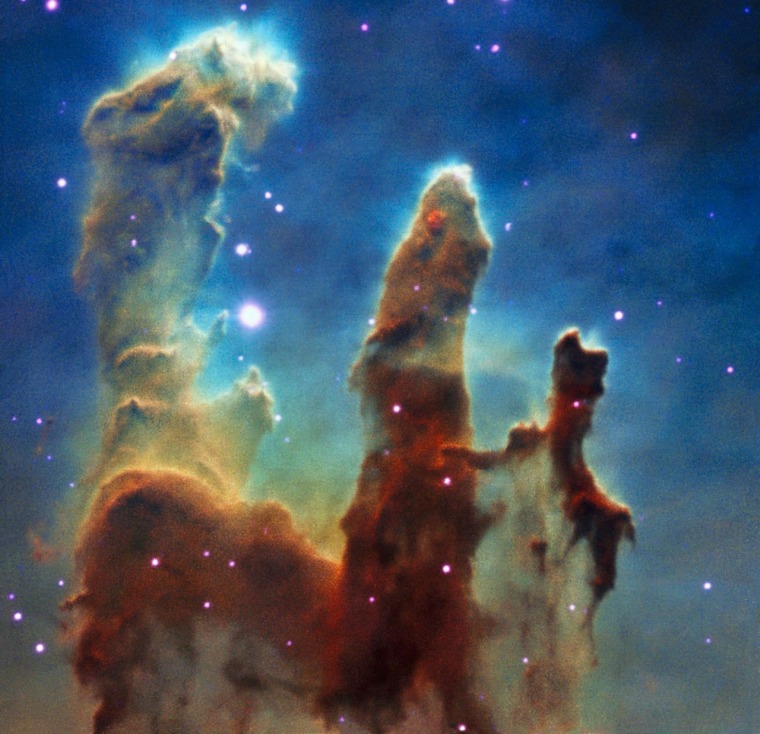New images provide the first complete 3-D view of the iconic Pillars of Creation — and suggest that the glorious protrusions may be around for only another 3 million years.
The new images reveal never-before-seen stars in the thick, fingerlike gas clouds, as well as new details about their orientation in space. You can get a close look at the formation in a new video of the Pillars of Creation.
The Pillars gained worldwide fame when they were imaged by the Hubble Space Telescope in 1995. In 2014, Hubble used its updated hardware to produce even higher definition images of the region.
These cosmic protrusions are composed of dust and gas, and are part of a larger region known as the Eagle Nebula — a fertile region of new star formation about 7,000 light-years away. When hot and massive new stars begin burning in gas clouds like the Eagle Nebula, they emit strong stellar winds and powerful waves of radiation that disperse much of the gas that surrounds them.
Denser pockets of gas in these star-forming regions can sometimes withstand the radiation and stellar wind. Such pockets can then act as a shield to the gas that lies behind it. As a result, in these regions of star formation, astronomers often see column-shaped gas structures. These protrusions are sometimes called "tails," "elephant trunks" or in this case "pillars," the European Southern Observatory says.
The "shield" of the leftmost pillar is the upper tip, which the new images show is oriented toward Earth.
The powerful wind and radiation can push down those shields of dense gas. New readings from MUSE — the Multi Unit Spectroscopic Explorer that's attached to ESO's Very Large Telescope in Chile — made it possible for astronomers to measure the rate at which the Pillars of Creation are being destroyed in this way: They're losing about 70 times the mass of the sun every million years.
The Pillars of Creation are estimated to contain about 200 times the mass of the sun. If the current rate of evaporation continues, these gaseous fingers could be destroyed in about 3 million years. astronomers say.
The new study appears in Thursday's issue of the Monthly Notices of the Royal Astronomical Society.
— Calla Cofield, Space.com
This is a condensed version of a report from Space.com. Read the full report. Follow Calla Cofield on Twitter. Follow Space.com on Twitter, Facebook and Google+.
